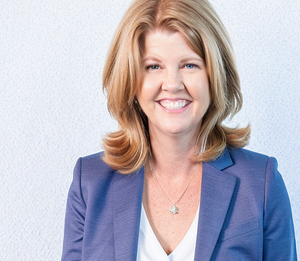We should begin with a common understanding of the different meeting types a small business can have — and determine what the goals are, who the attendees should be, as well as the suggested frequency of each kind. Let's dig in!
The Document:
Next Up:
I suggest watching this video next:

The Transcript:
So I want to get to a common understanding of the different meetings that are out there that I think will be productive for your business. And as we work together, we are going to take items off this menu. We are going to select them and customize them for exactly what you got going on in your business at this moment and what you might need in the very near future.
But I want to kind of run through the template itself, the menu itself, so that we have a good understanding of what's out there and why I think that these set meetings and the cadences that I suggest are going to be helpful for businesses that are around your size. So the first one is the leadership meeting. And by that, I mean the CEO and the second in command, whatever you call your second in command, I'm going to call them COO in this document, but substitute whoever your right-hand person is, the general manager, the integrator of your business. So a leadership meeting is a weekly meeting between the two of you and you are focusing on the, how you're tracking towards the monthly and quarterly priorities that you have already set.
So the COO is coming to the meeting fully prepared to talk about all of the different priorities that you set ahead of time and that sort of the report card of how the business is tracking to that priority. Will it be hit on time, on due date, on budget, or are there risks? So what's this completely rolled up update status to you on a weekly basis.
You're also talking about personnel issues, any strategic decisions, any tactical decisions that are going on in your business. Basically it's a, it's a steering the ship meeting between the two of you so that your second in command knows what they're doing and knows how to go off and get the team, you know, on board for whatever's coming down the pike and you feel fully informed about how the business is going so that you can go off and do the things that only the CEO can do.
And so this is a coming together of sort of the, the visionary and the integrator getting on the same page weekly. So that's what the leadership meeting is. That's a little different than a, what I call a cabinet meeting, which is sort of the wider leadership meeting. So there are plenty of times where CEOs want to be meeting. They don't necessarily want a transactional meeting with their COO.
They kind of want all of what they would consider the leadership positions in the company. And they want to talk a little bit higher level about maybe some new ideas. Maybe they want those heads to weigh in on some strategic decisions. Maybe you're trying to set priorities for the next quarter or the next year. And so a wider leadership meeting can happen monthly or every other week.
It kind of depends on, on things and you are not necessarily running the business during those meetings, you are thinking about what the business is going to be doing. Next staff meetings are when your second in command is our meeting with the department heads, and that is a weekly meeting. So it's kind Of the, to the leadership meeting. So the leadership meeting is the first and second in commands.
And the staff meeting is the second in command. And the, you know, department heads, I put everything in air quotes because a lot of times people are like, wow, that sounds really corporate. But what I'm trying to do is identify the right person in the org chart to be having that, to be having the meeting. So a weekly meeting where the COO and the department heads are talking about,
how are we tracking to the priority priorities that we've set? So again, monthly priorities or quarterly priorities, whichever whichever you have going on in your business or both, and you're solving issues. So this is how the COO gets fully informed of exactly what's going on in the business and is able to turn around and report it to the CEO in the leadership meetings.
So lots of trees, lots of details, lots of issue wrangling are going on here. Not everything needs to bubble up to the CEO. That's why you actually have hired a second in command to deal with a lot of the little lady bitty problems. And so the COO makes a determination of what is worth knowing and what is worth reporting up here. But they are handling business in this meeting on a weekly basis.
Okay. An all hands meeting can happen monthly or quarterly as needed. These aren't necessarily meetings where work is getting done. When I say work, I mean the daily business of handling issues and rolling stuff out of operations, operationally, they are important. However, for team cohesion for, for excitement and for comradery. And so you have things like announcements or awards,
big, thank you's. If you're kicking something off, if something just ended, you know, launched celebrations close up, you know, like when a course has its final meeting and, you know, you graduate your students, there's kind of maybe a, a meeting to sort of celebrate the end of that holidays, happy hours, things like that. This is a little bit more of a gathering than a meeting because it's,
I mean that the topics are a little bit lighter usually, and you're not necessarily trying to get work done. Project meetings are focused around whatever project is going on. So for instance, marketing can have a standing marketing meeting and they will probably have it weekly, although they can make that decision a little differently. The operations team might mana huddle. The customer service team might want to huddle.
Maybe we'll have a project that is cross-functional. There's a little, a few people from marketing, a few people from customer service and a couple of course, peoples, and they all need to meet at whatever frequency in order to move a project forward. That's a project meeting and you're focused on whatever the stated goal of that project is. And so what's happening.
There is people are sort of reporting in on their project, on their little, their little aspect of the project that they're responsible for. And then you're identifying issues and you're solving them. So those go on usually at a weekly basis, whatever the, whatever the frequency is that you need to keep your foot on The, for your projects. And then there are fire meetings,
and those are the single issue meetings that are called as needed to problem solve and issue. So whether that's literally something that just, you know, an error or a broken link or something terrible just happened, then you need to huddle and try to solve it. But these are as needed. They're usually by invitation only because you need certain heads at the table,
but then the other people get kicked loose to go do other stuff. And the focus is on identifying the issue, troubleshooting it, and then problem solving it. So you want to set a goal for the meeting and then drive to that goal and then conclude the meeting when that's done. So these meetings of course happen. They just will happen, but they are not the same.
As some of these other meetings, they are not project meetings. Project meetings will happen a pace, even if there's fires, even if you, you, some of the people hang up, a few people stay on and now it's a fire meeting. Maybe in the second hour of the meeting, it's different. It is, the agenda is different. The goal is different.
This is to move projects forward. This is to troubleshoot and problem solve issues. So you and I will be working together to identify which one of these, which several of these are going to be in play in your business, at what frequency with who and what the agenda might look like.








Member discussion